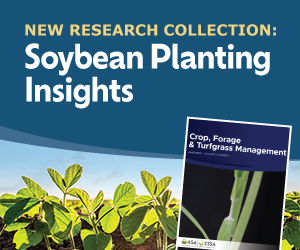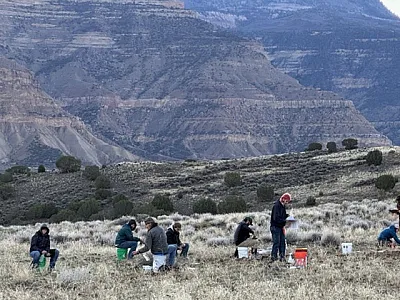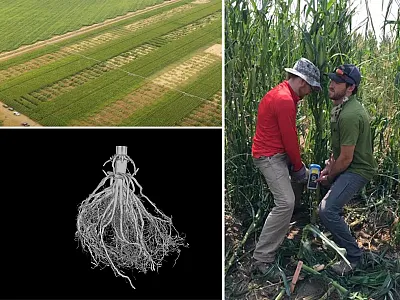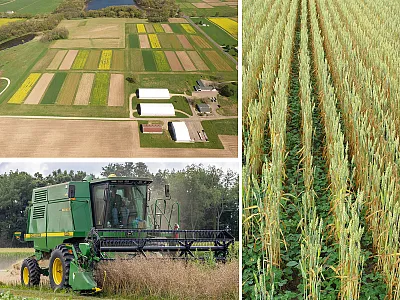Drawing, writing, and painting with soils
How creative practices and communication tools can help bridge the gaps among soil scientists, students, and the public
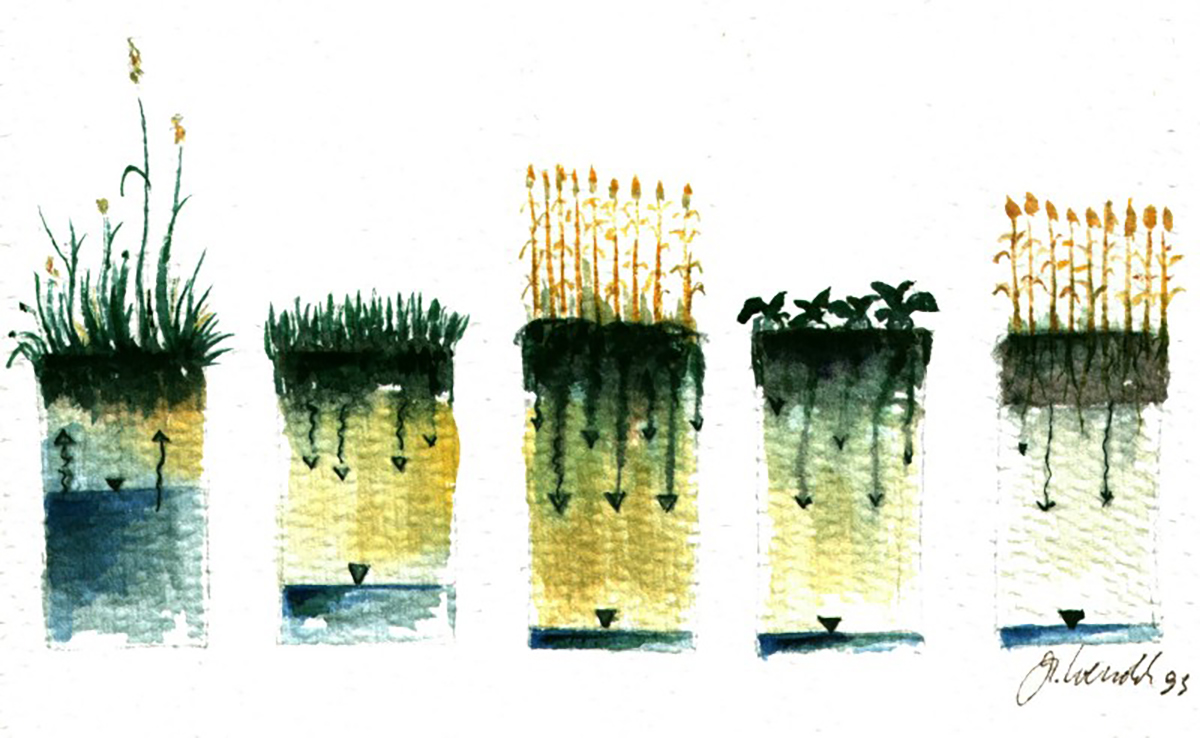
Some researchers advocate using artistic practices—painting, writing, and multimedia—to visualize and communicate complex soil science concepts, such as the vadose zone, to broader audiences.
These creative approaches help connect people to invisible soil processes, fostering public understanding and appreciation.
Writing-to-learn exercises and art-based fieldwork to help students connect personally with soil science, increasing engagement, understanding, and motivation to learn.
Ask a stranger on the street, “What is the vadose zone?” and you’ll likely get a blank stare.
But show them the watercolor painting above, and they might start to get the picture.
Gerd Wessolek, a soil scientist at the University of Technology Berlin, created this painting in 1995 to depict the dropping of the water table following the construction and pumping of new wells in northern Germany. The arrows show directions of water and solute transport amid different land use scenarios resulting from the water pumping.
“As soil scientists, these results of our papers are so specialized,” Wessolek says. Studies of soil in the vadose zone, the area of soil between land surface and groundwater table, can be particularly opaque, with physical processes represented in inaccessible mathematical models. But artworks like this watercolor painting can bring these topics to a wider audience.
Wessolek had studied art in addition to soil physics prior to working with renowned vadose zone scientist Rien van Genuchten in the 1990s. It was van Genuchten who set Wessolek on his path of making art about soil. “When I left his group in Riverside, he said to me, ‘Gerd, go on with soil and art and paint. There are many people in soil physics, but few who try to combine.’”
Wessolek and his former Ph.D. student Alexandra Toland, an artist, landscape planner, and professor at Bauhaus University Weimar, recently published a paper in Vadose Zone Journal (VZJ) encouraging collaboration between artists and soil scientists. This cooperation indeed can better serve public understanding of science and can enhance the practices of both the artists and scientists involved.
What’s more, engaging with and creating art can provide new avenues for students learning about soils. So can writing, providing students with opportunities to connect soil science concepts to their experiences, emotions, and environment. And simple choices such as the words and metaphors scientists use to explore and explain soil health can have a huge impact on reception and understanding.
“Art making, writing, and science, they’re all processes,” says Yamina Pressler, a soil scientist at Cal Poly in San Luis Obispo, CA and member of SSSA who was not involved with the VZJ paper. “They're ways of making meaning and trying to understand the world around us. Often science and art get separated in our popular culture. But to me, I see them as just different ways of trying to understand the world and make sense of it.”
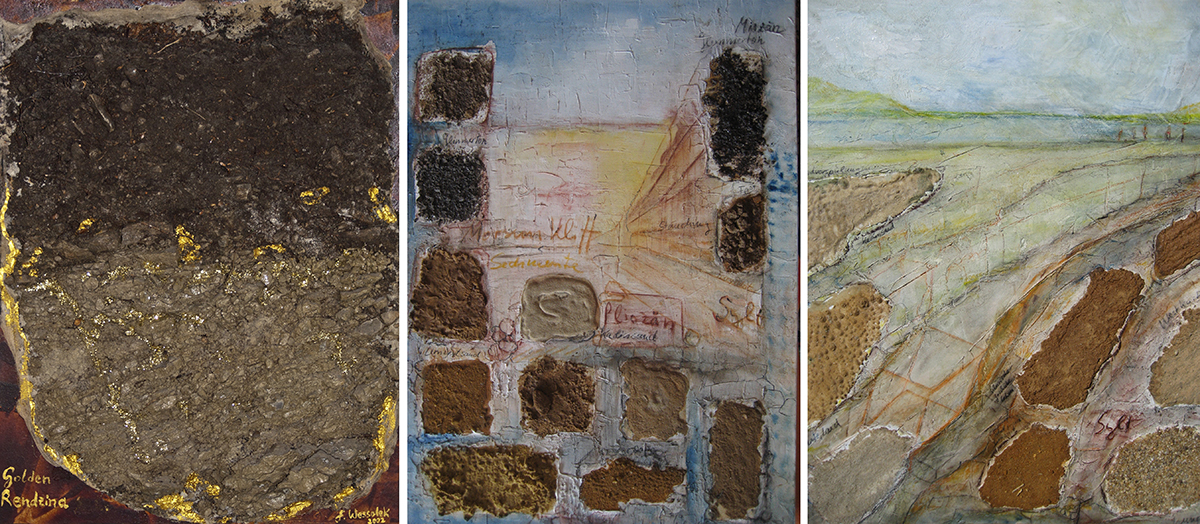
Making the invisible visual
Soils have long been the subject of visual art, and soil itself has been used as an art-making medium for millennia. But Wessolek and Toland posit that soil art is a distinct category of works “in or with soil or about soil conservation issues, expressed via a wide range of artistic disciplines resulting in a multisensory esthetic experience.”
One such example, specifically about the vadose zone and exemplifying the researcher–artist collaborations Wessolek and Toland advocate, is connected to Germany’s “WindNODE” research project, executed between 2018 and 2021. To transport energy from oceanside windmill farms in the north of the country to the south, the location of the country’s auto industry, a 4000-km-long cable line was installed in the soil. With this installation, the soil transformed from purely agricultural land to an energy transport medium, and its properties and functions changed, too. The soil now transfers heat from the electricity transport into the surrounding soil environment, preventing the cables themselves from getting too hot.
But most people likely do not understand, or have never even contemplated, the role soil plays in electricity generation, Wessolek says. “The cable liner slowly disappears into the landscape,” he continues, “and nobody remarks that there is electricity underground.” To illustrate and illuminate the interplay between soil and energy use, Wessolek created a painting depicting cross sections of the energy cable surrounded by heat transport equations. Also as part of this multidisciplinary collaboration, artist Betty Beier collected a sample of the soil at the cable installation site before digging began and prepared it on a canvas.
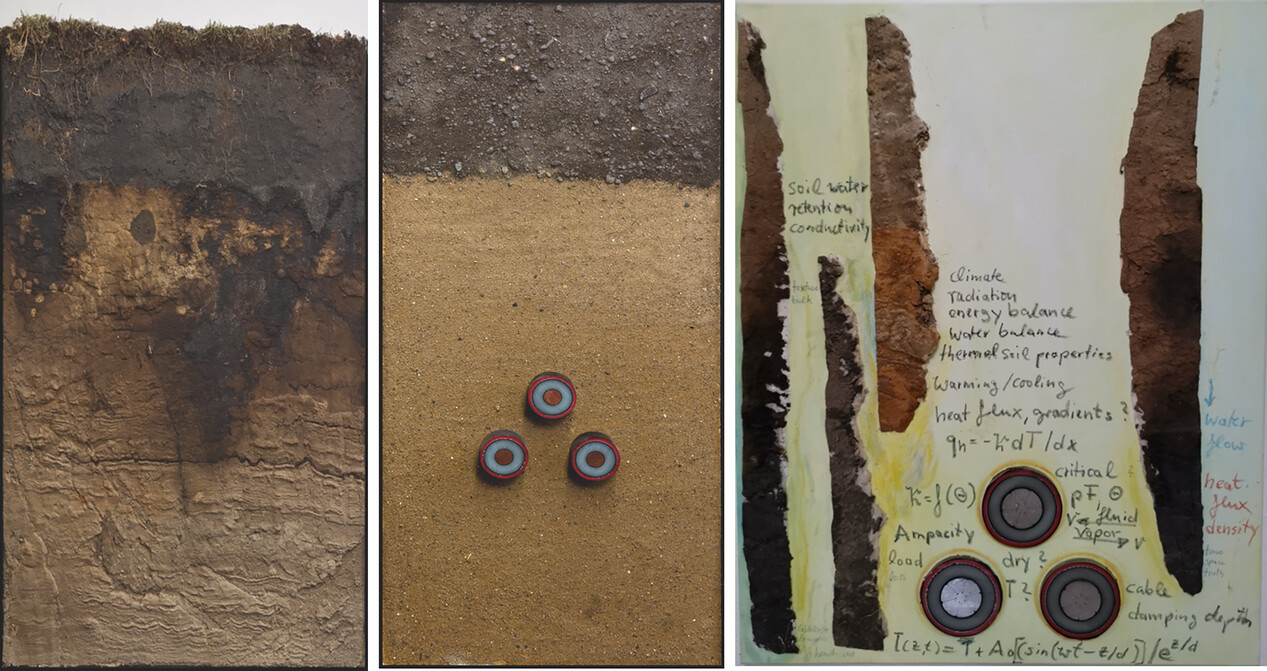
The project was intended “to show how soil is important,” Wessolek says. Wessolek’s and Beier’s artworks, and the project as a whole, made visible and tangible the invisible. And they open opportunities for the general public to understand and connect with soil science. This is especially important, Wessolek says, in the case of projects and initiatives funded by government support and public tax dollars. In their VZJ article, Wessolek and Toland advocate for funding to be directed to this transdisciplinary work. “It’s a win-win situation,” Wessolek says. “Not only do the scientists benefit, but the artists benefit from the scientists as well.”
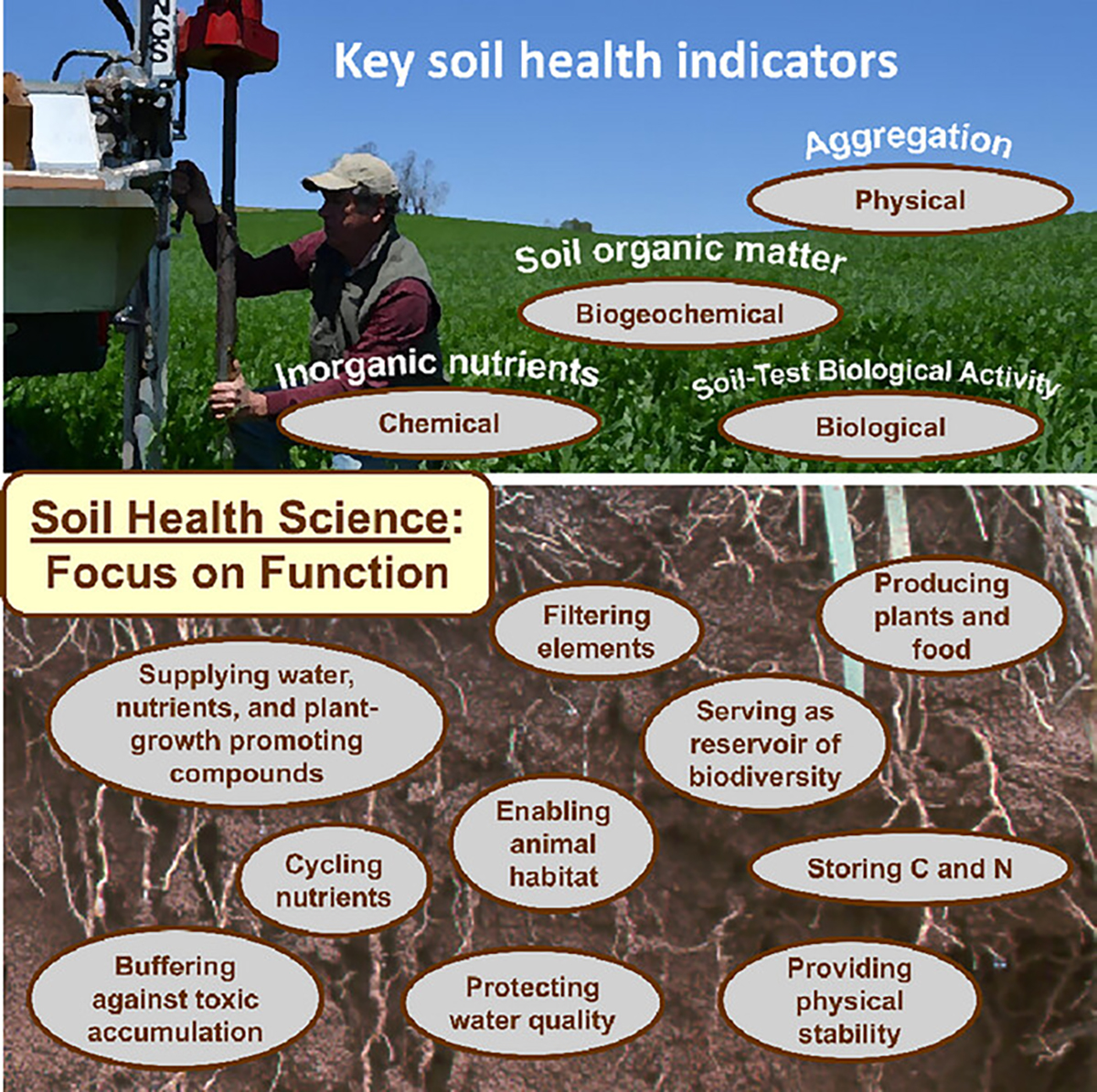
Something as simple as the very language researchers use to tell soils’ story can also help bridge the gap between science and public, says ASA, CSSA, and SSSA member Alan Franzluebbers. In a recent commentary published in Agricultural & Environmental Letters, Franzluebbers, an ecologist with USDA-ARS and North Carolina State University, argues that scientists may have success fostering appreciation for soil using storytelling techniques that connect soil health to something most people are intimately familiar with: human health.
“Why do we even call it soil health?” Franzluebbers reflects. “Well, because soil is living.” Both systems rely on interconnected functions. Much like we breathe, soil releases CO2 into the atmosphere. And as humans need nutritious food to survive, soil requires organic matter inputs, Franzluebbers writes. Human veins and arteries are like the soil pores that transport water and nutrients, human digestion is akin to soil microbial activity.
Disconnect from the natural world can lead to abuse of natural resources, Franzluebbers says. Explaining soils in “human terms” can help mend that detachment. “It’s an educational kind of way of expressing that, to make sure that people understand we need to take care of the land.”
Creativity, connection, and growth
Throughout his career, Wessolek has also seen the benefits of combining art and soil science in the courses he has taught at Technical University Berlin. He’s had students create soil-related art projects in the field, collaborate with outside artists, and even create soil-related movies. The field art projects in particular have created opportunities for learning, connection, and finding meaning, especially in the city of Berlin, where digging just below the soil’s surface makes the realities of the city’s war-torn past visible and present. Digging into and creating artworks out of soils on the Teufelsberg hill, formed from dumped rubble after World War II, or in the Tiergarden park, where Berliners grew potatoes after the war to survive, brings the topic of urban soil formation to life.
“For the student, that’s so far away,” Wessolek says of the historical events that created Berlin’s soils. “But when we dig [in] the soil, suddenly they can see it. It is a completely different method to enter soil science,” he continues. “It’s not abstract anymore.”
Making soils personal can also motivate students’ learning in the soil science classroom. Pressler has found success in integrating self-directed writing-to-learn exercises in the soil morphology course she teaches. In the assignments, students often write about their lives, their backgrounds, their interests, and their aspirations. “I'm hopeful that if they connect the course content to something that matters to them, they're more likely to remember it, and importantly, it helps increase intrinsic motivation for their own learning,” Pressler says. “There's always a way to connect it back to soils because soils are connected to so many different things.”
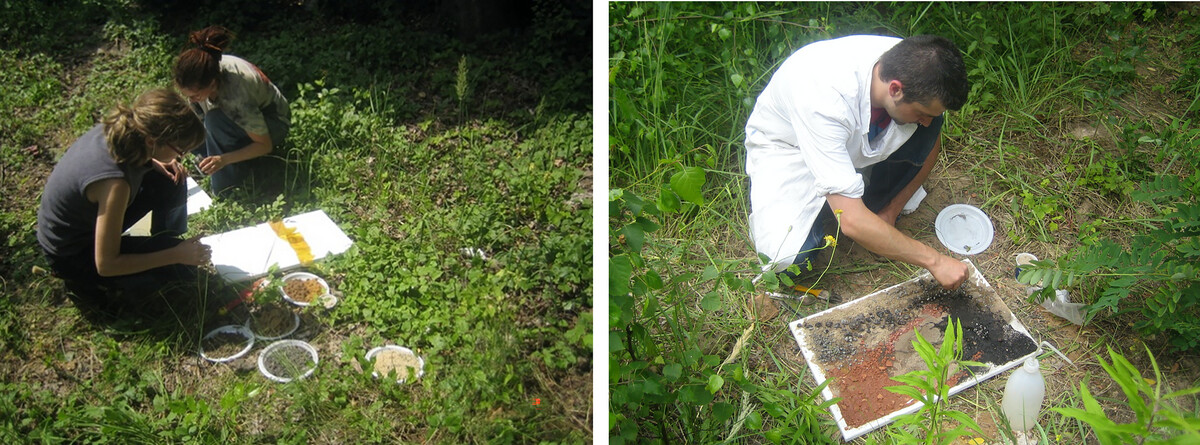
At the 2024 ASA, CSSA, and SSSA Annual Meeting (now known as CANVAS) in San Antonio, TX, Pressler presented on the outcome of implementing writing-to-learn exercises in her soil science courses. The writing-to-learn approach engages students in short, low-stakes writing activities to help them think through concepts. Unlike writing to communicate ideas to an audience, writing-to-learn is meant to facilitate a student’s own understanding of what they’re writing about. Every week, Pressler’s students write “mini-notes” in which they take an idea from class and connect it to something they already know. At the end of the course, Pressler has them collect ideas from these writings and develop an integrative essay intended to communicate something related to soil.

The impact of such assignments might seem ephemeral, but research shows that writing-to-learn supports students’ scientific concepts and methods. In a 2018 study, Colorado State University science education researcher Meena Balgopal found that integrating writing-to-learn tasks in an undergraduate-level cell biology lecture helped students perform better in the course. It also helped them become more proficient at writing-to-communicate.
Pressler met and collaborated with Balgopal as a graduate student at Colorado State and began integrating writing-to-learn exercises into her own pedagogy when she came to Cal Poly. Soil science can be a particularly fruitful subject for students to explore through writing. “Soils are complex, dynamic systems, and in order to understand how soils form across space and across time, there are a lot of different interdisciplinary pieces of things we need to know. That complexity can be challenging for students to tease apart,” Pressler says.
Her ultimate goal with the writing assignments is to increase students’ intrinsic motivation for learning about soils. To do so, she focuses on designing assignments that give students agency over their own learning, is transparent with them about how the assignments build their knowledge and skills, and models curiosity for students by designing assignments that she herself would be interested in doing.
“I’ve been struck by how creative students can be and how different the essays turn out in the end. Some students produce essays that are very poetic. Some students produce essays that are more technical in nature, and all of them are great,” Pressler says. “I think it speaks a lot to the importance of communicating in lots of different ways. I don't think that there's just one way to talk about soils,” Pressler says. “Soils need everyone’s voices.”
Dig deeper
Check out the research mentioned in this story:
Wessolek, G., & Toland, A. (2024). Exploring the artistic dimensions of soils in the vadose zone. Vadose Zone Journal, 23, e20308. https://doi.org/10.1002/vzj2.20308
Franzluebbers, A. J. (2024). Our connections to soil health through simile. Agricultural & Environmental Letters, 9, e70003. https://doi.org/10.1002/ael2.70003
Pressler, Y. (2024) Writing with soils: How we make meaning in soil science [oral presentation]. 2024 ASA, CSSA, and SSSA International Annual Meeting, San Antonio, TX. https://scisoc.confex.com/scisoc/2024am/meetingapp.cgi/Paper/161762
Text © . The authors. CC BY-NC-ND 4.0. Except where otherwise noted, images are subject to copyright. Any reuse without express permission from the copyright owner is prohibited.




